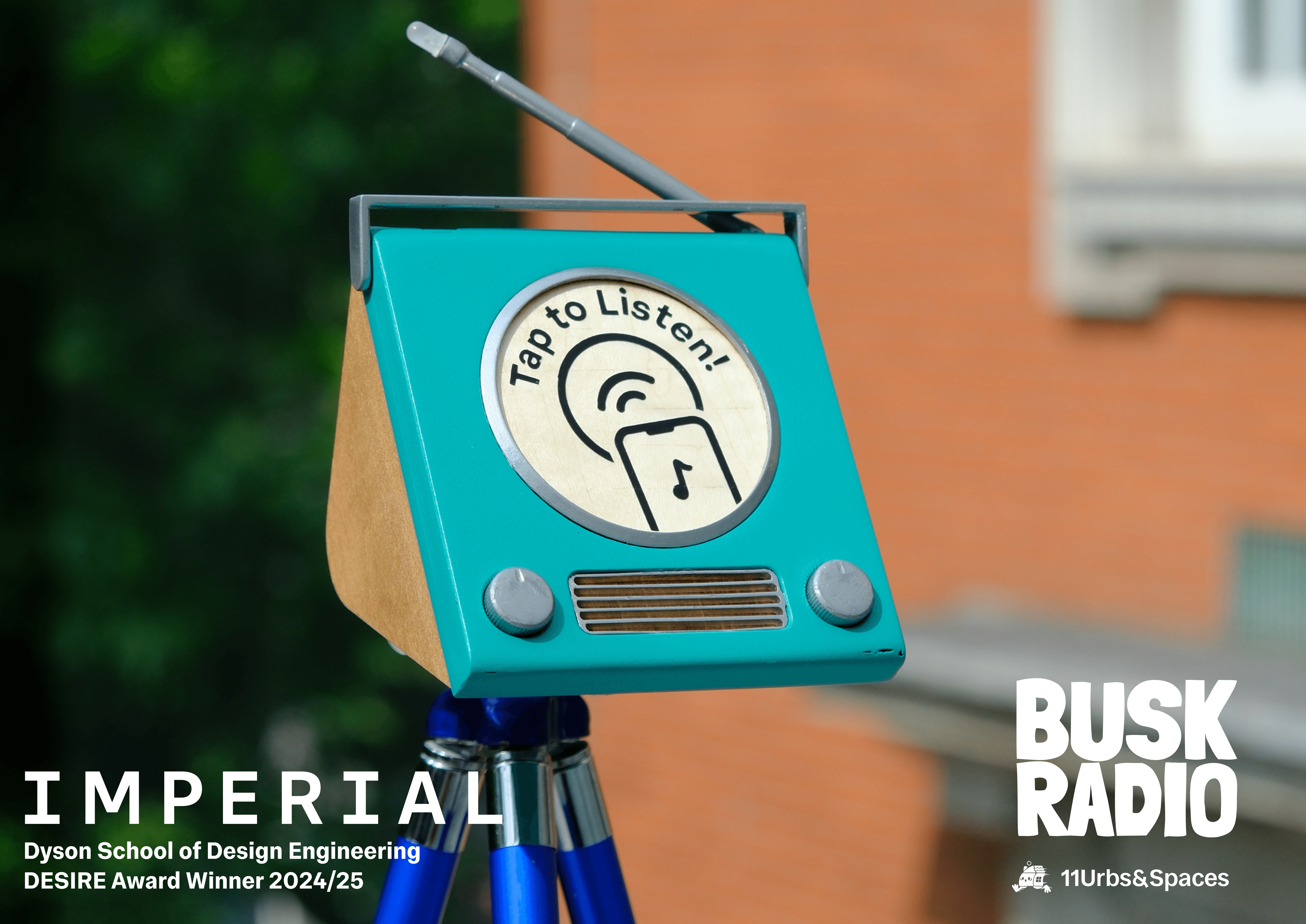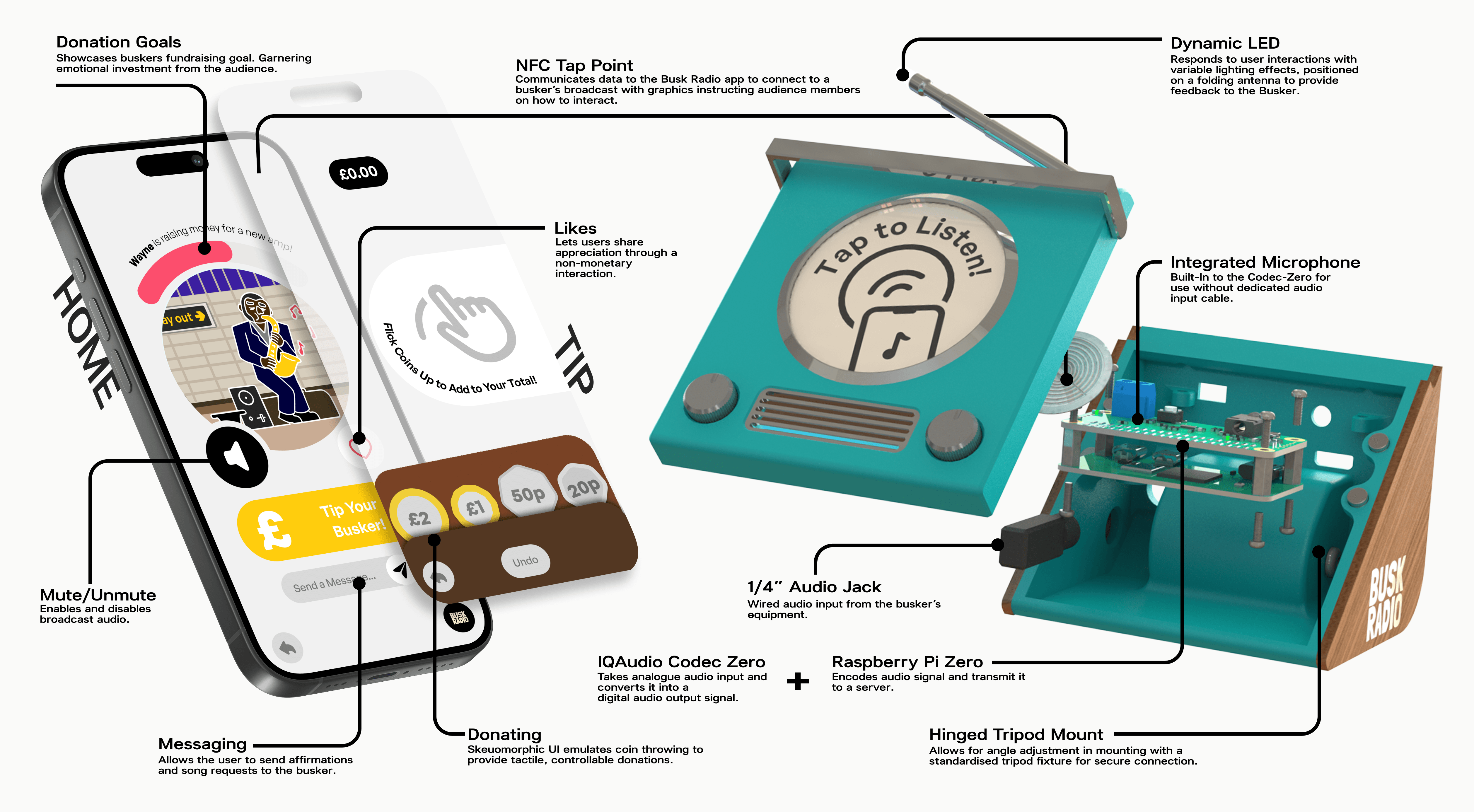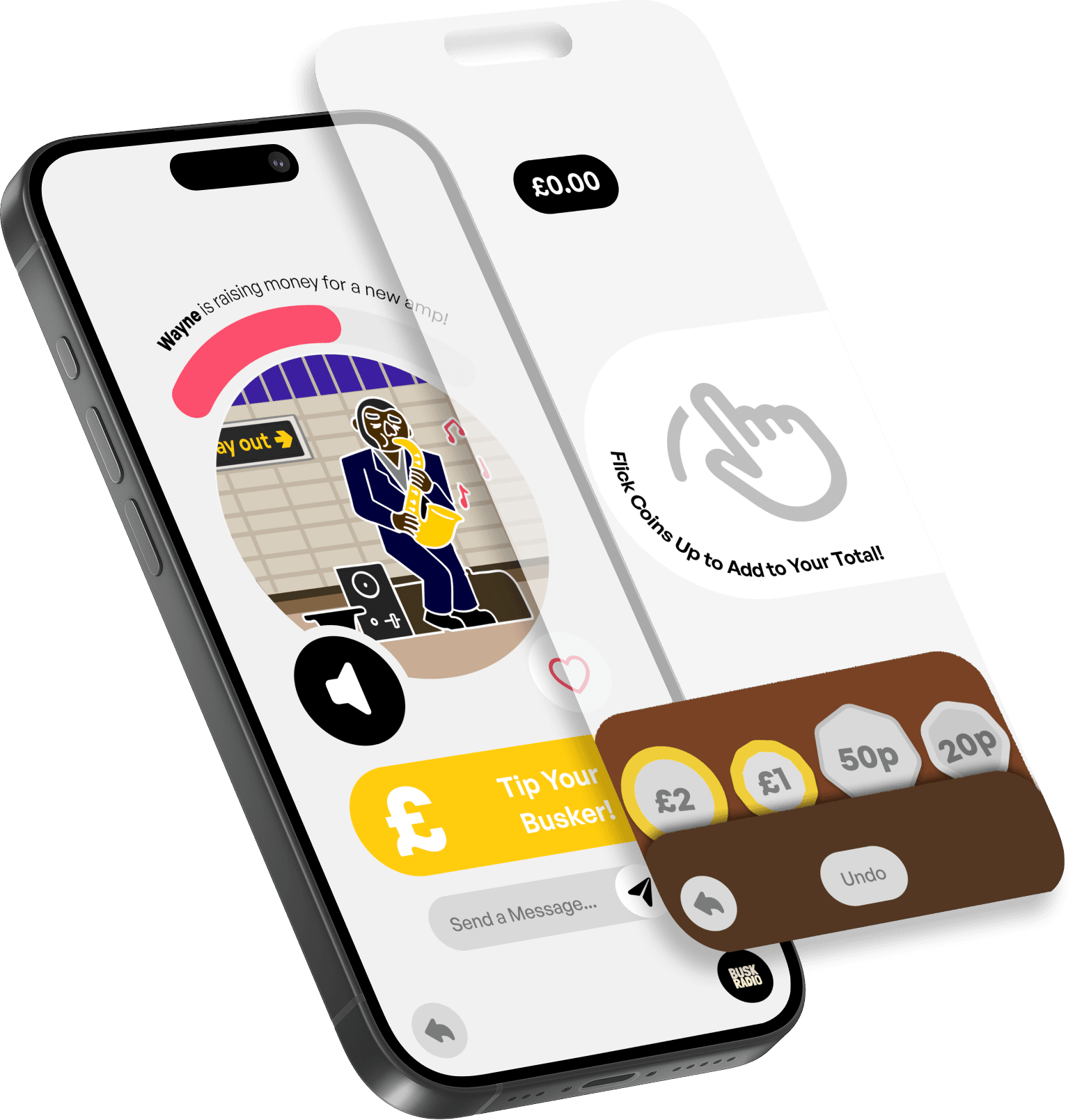The Brief
We were given a brief to design a solution that fosters playful interaction in urban spaces, encouraging community building among people who share those spaces.
We saw urban play as a way to break the routines of city life and create moments of shared joy. Buskers stood out as natural catalysts
- transforming public spaces into places of connection between strangers.
After thorough research, we set our brief:
In an increasingly cashless society, card donations are becoming the norm. However, they often lack emotional engagement, making them less rewarding for audiences.
This discourages interaction with buskers and limits their earnings. Our solution aims to remove social barriers around donating by creating a
playful, engaging, and frictionless experience
- whether donating or not.
- Estimated Buskers
- 40k
- Listeners / Yr (TFL)
- 3.5M
- Buskers in London
- 700+
The Process
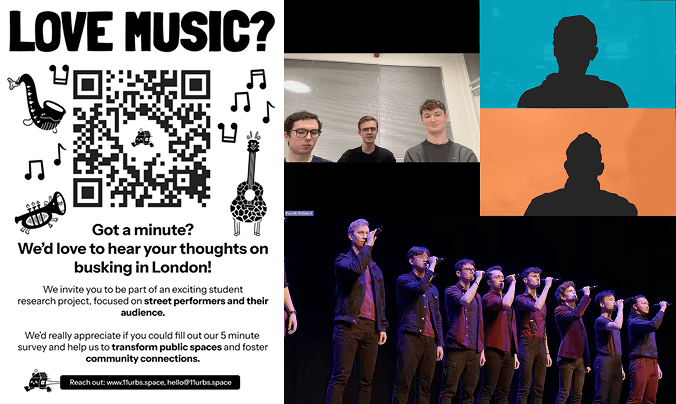
Investigation
Speaking to (lots of) people
We engaged directly with buskers and their audiences to understand the challenges they face. To broaden our insights, we also surveyed 40 members of the public, giving us a wider perspective on behaviours and attitudes.
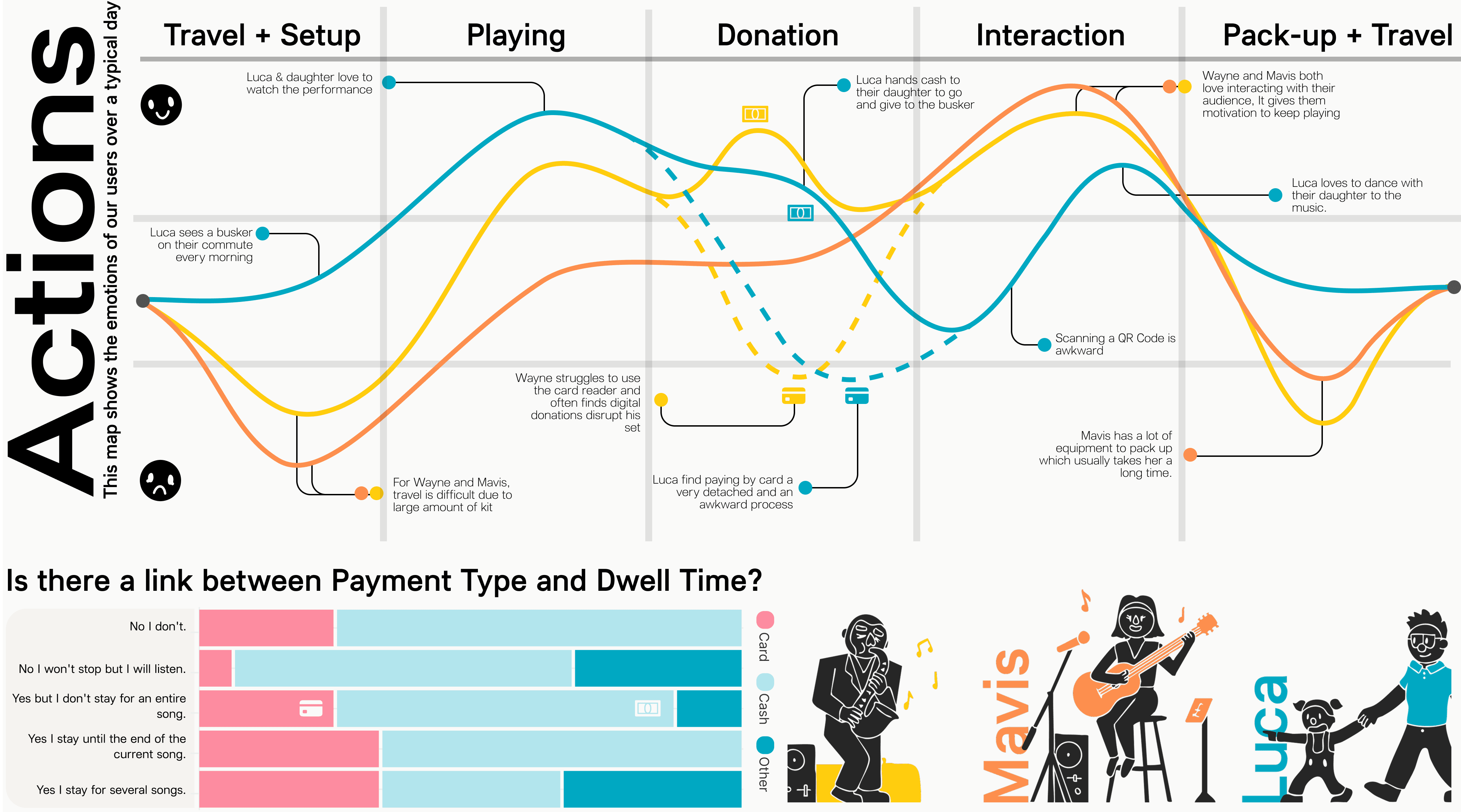
Analysis
Running the numbers
We uncovered that buskers hold strong potential as community builders. However, this potential remains untapped due to stigma and awkwardness around donations. By mapping experiences, analysing surveys, and synthesising interviews, we pinpointed the barriers and opportunities shaping audience-performer interactions.
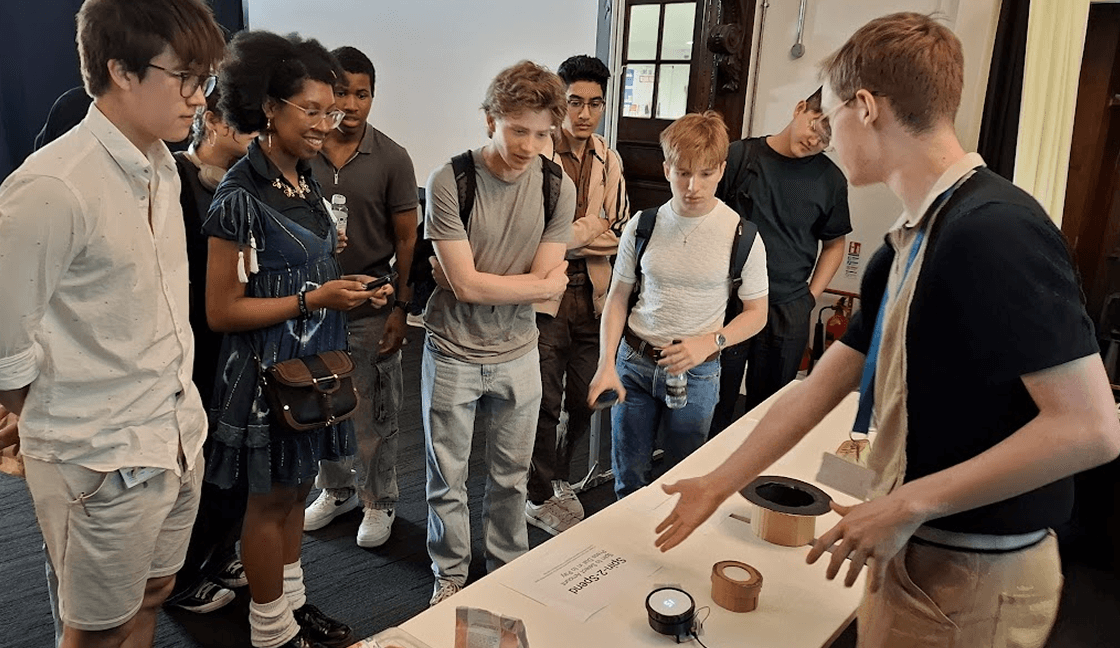
Ideation
Putting our heads together
Inspired by TikTok and Twitch, we generated 50 concept ideas to tackle our challenge. These were tested in a live Mock-up Busk, where real audiences gave feedback. From this experiment, Busk Radio emerged as the strongest direction, blending participation with playful interaction.
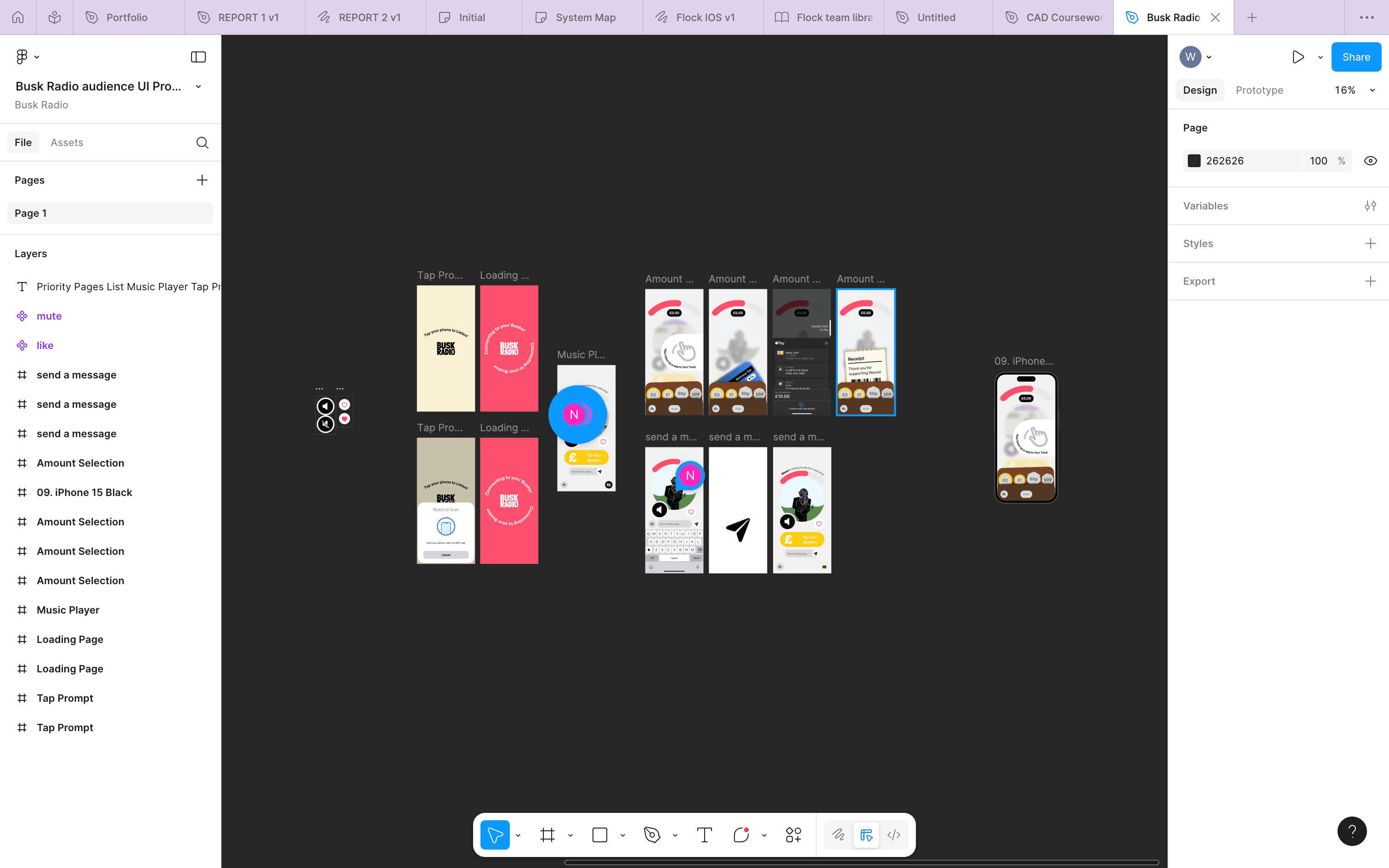
Design
Out came the colouring pencils
We moved into Figma and CAD, building both the physical Tap Point device and the audience app. Through rapid prototyping and user feedback, we refined layouts, interactions, and aesthetics - ensuring the system stayed intuitive, playful, and easy to use for both buskers and audiences.
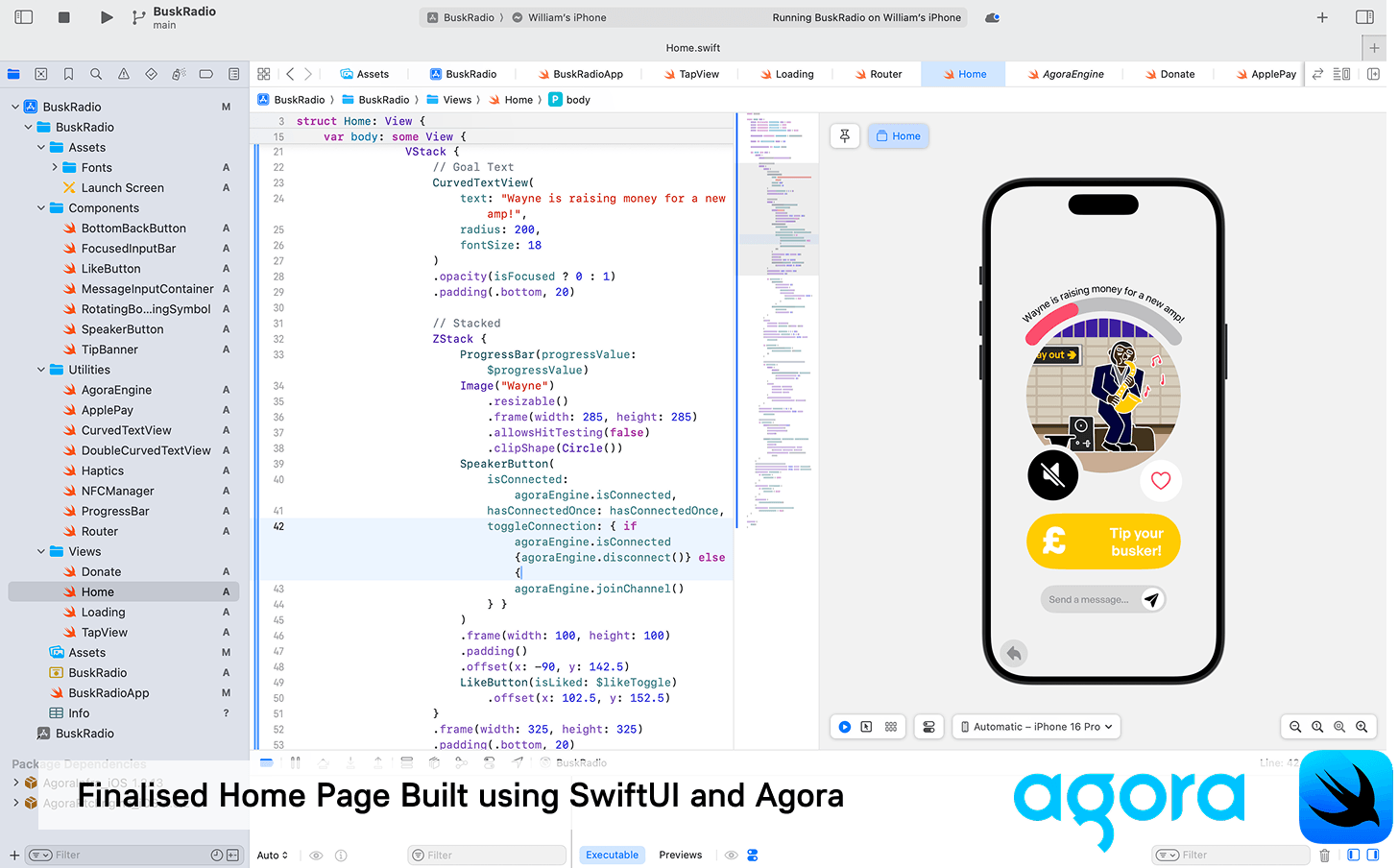
Integration
Code, Sweat & Tears
I transformed our Figma prototypes into a SwiftUI app, building custom components for audio streaming, gestures, and haptic feedback. The app integrated Agora for live streaming, Apple Pay for donations, and NFC for tap-to-connect interactions. In parallel, I developed the Tap Point hardware with a Raspberry Pi Zero 2 W and Codec Zero, enabling WiFi connectivity and real-time streaming.
The Result
What we made
Busk Radio is a system that combines a Tap Point device with a mobile app, letting audiences keep listening to a busker’s live music as they move through the city. The app provides seamless ways to donate, react, and connect, making interactions with buskers more playful, rewarding, and socially engaging. For buskers, it extends performance reach, builds community, and increases both income and visibility.
Our project was recognised with the DESIRE Award (Design Engineering Selected Innovation REcognition) from the Dyson School of Design Engineering. This award celebrates coursework that delivers a fresh and imaginative response to its brief, acknowledging Busk Radio’s success in tackling barriers to urban interaction and reimagining how communities connect through music.
